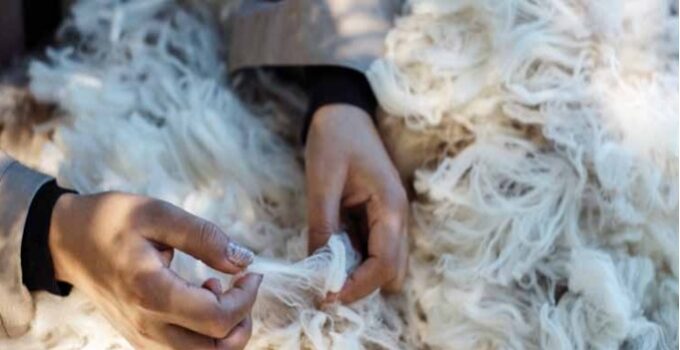Have you ever wondered where the wool in your cozy sweater comes from? The wool journey, from the backs of sheep to the racks of your favorite clothing store, is an intricate process involving multiple steps and participants. In this article, you will delve into the fascinating world of the wool supply chain, exploring the journey of wool and the role of a permit like a woolmark supply chain license in ensuring its quality and authenticity.
What is the Distribution Permit?
The fabric companies which have a global authority on wool offer a supply chain license to companies involved in the wool industry. This license acts as a certification of quality and authenticity, ensuring that the wool used in producing various woolen products meets the highest standards. To obtain this license, companies must adhere to stringent guidelines and undergo regular audits to maintain their compliance.
The Journey Begins: Shearing and Sorting
Source: iwto.org
The first step in the wool supply chain is shearing. Skilled shearers carefully remove the fleece from the sheep, ensuring that the animal is unharmed. Once the wool is sheared, it is sorted based on its quality and characteristics. This sorting process is crucial as it determines the potential end-uses of the wool. The permit guarantees that the wool comes from farms that prioritize the well-being of the sheep and follow sustainable practices.
Processing and Spinning
After sorting, the wool undergoes processing to remove impurities such as dirt, oil, and vegetable matter. This process, known as scouring, cleans the wool and prepares it for further processing. After cleaning, the wool undergoes carding to align the fibers and eliminate any remaining impurities.
The carded wool is then spun into yarn. This process involves twisting and stretching the fibers to create a continuous thread. The quality of the yarn depends on various factors, including the type of wool, the spinning technique, and the expertise of the spinner. The license ensures that the yarn used in their certified products is of the highest quality and meets stringent standards.
Weaving and Knitting
Source: gathertextiles.com
Once the yarn is ready, it is sent to textile manufacturers specializing in weaving or knitting. Weaving involves interlacing the yarns on a loom to create fabric, while knitting uses a series of interconnected loops to form a textile structure. Both processes require skilled artisans and advanced machinery to transform the yarn into the desired fabric.
Design and Manufacturing
With the fabric ready, it’s time for designers and manufacturers to work their magic. Designers create patterns and styles, while manufacturers cut and sew the fabric into garments or other woolen products. The permit ensures that these products are made with genuine wool and meet the highest quality standards.
Certification and Distribution
Source: simplilearn.com
Once the products are manufactured, they undergo a rigorous certification process before reaching the market. This process involves quality checks, testing, and verification to ensure that the products meet the supply chain license requirements. Products that pass the certification process are labeled with the retailer’s logo, assuring consumers of their authenticity and quality.
The certified wool products are then distributed through various channels, including retail stores, e-commerce platforms, and specialty boutiques. Consumers can confidently purchase these products, knowing they support a sustainable and ethical wool supply chain.
Benefits License
The license offers several benefits to both businesses and consumers:
- Assurance of Quality: The license guarantees that the wool used in certified products meets the highest quality standards, assuring consumers.
- Ethical and Sustainable Practices: Companies with a supply chain license are committed to the ethical treatment of sheep and sustainable farming practices, promoting animal welfare and environmental conservation.
- Traceability: The license ensures traceability throughout the supply chain, allowing consumers to know the origin of the wool in their products.
- Innovation and Collaboration: License holders have access to a wool network of industry experts and cutting-edge research, fostering innovation and collaboration within the wool industry.
Conclusion
Source: customwoolenmills.com
Understanding the wool supply chain, from sheep to sweaters, provides valuable insights into the intricate process behind the creation of woolen products. The permit, like the woolmark supply chain license, plays a crucial role in ensuring wool’s quality, authenticity, and sustainability throughout its journey. By supporting companies with this license, consumers can enjoy the warmth and comfort of wool while contributing to a responsible and transparent supply chain.




